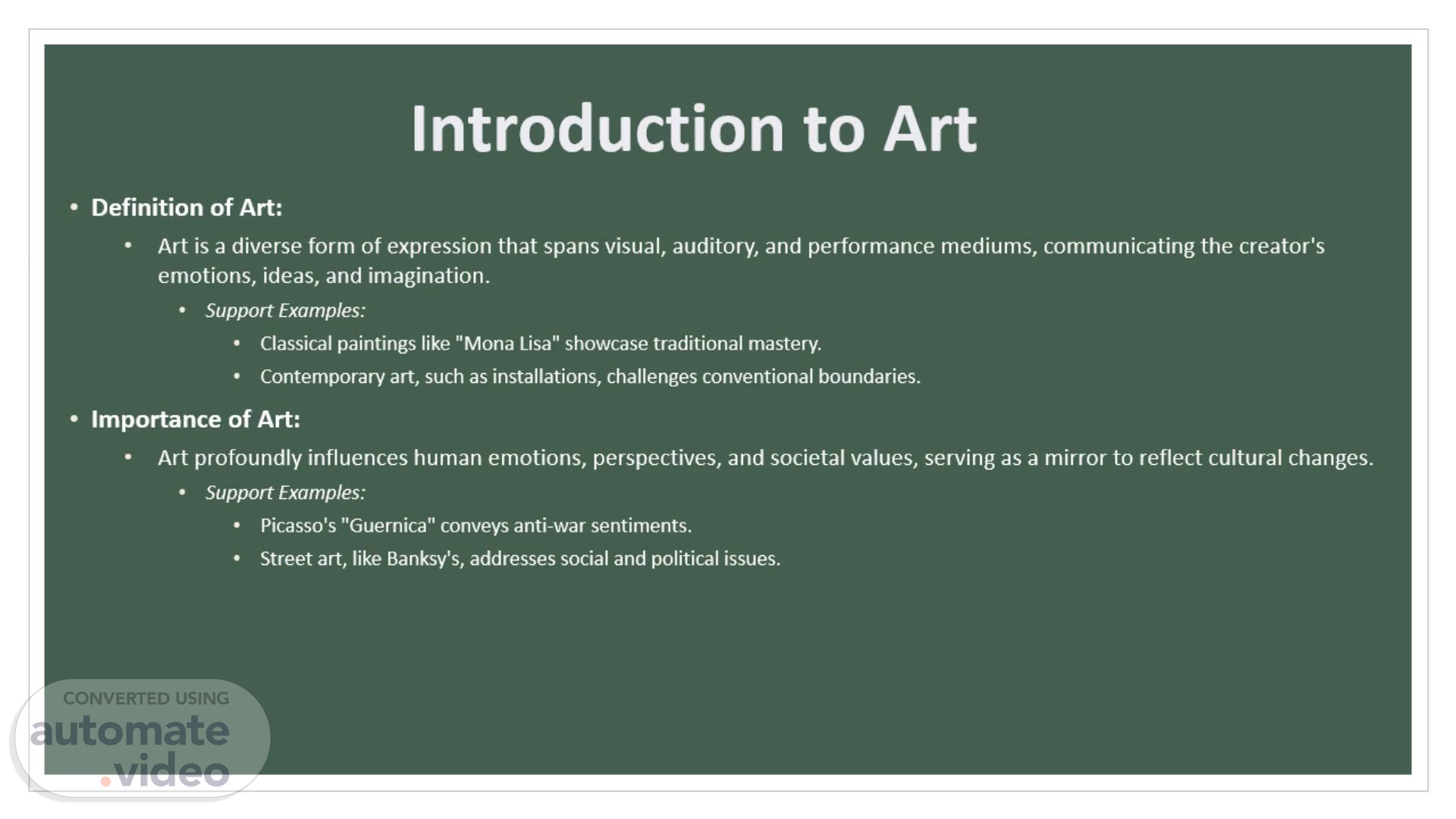Page 1 (0s)
[Audio] Welcome to our exploration of the essence of art. Art is a multifaceted form of expression that spans visual, auditory, and performance mediums, communicating the creator's emotions, ideas, and imagination. From classical masterpieces like the 'Mona Lisa' to contemporary installations challenging conventional boundaries, art is a dynamic language that transcends spoken or written words. Its importance lies in its profound impact on human emotions, perspectives, and its role as a mirror reflecting cultural shifts and societal values..
Page 2 (36s)
[Audio] Diving into the canvas, we encounter the foundational elements of art. These include line, shape, color, form, texture, and space, each contributing to the visual language of art. From Van Gogh's swirling lines in 'Starry Night' to Mondrian's use of geometric shapes and primary colors in 'Composition,' artists skillfully manipulate these elements. Additionally, principles of design, such as balance, contrast, emphasis, movement, pattern, and unity, guide artists in creating compositions that are both cohesive and visually compelling..
Page 3 (1m 16s)
[Audio] Embarking on a historical journey, we navigate through significant art periods, from the Renaissance and Baroque to Romanticism, Modernism, and the Contemporary era. Each period reflects distinct artistic styles and philosophical shifts. For example, the Renaissance celebrates humanism and realism, while Modernism embraces ion and breaks from tradition. Movements such as Realism, Abstraction, Surrealism, and Conceptual Art showcase the rich diversity of artistic expression throughout history..
Page 4 (1m 51s)
[Audio] In our digital age, we witness the emergence of new tools and platforms that expand artistic possibilities. Digital art, from graphic design to digital painting, offers a virtual canvas for artists. Technologies like virtual and augmented reality redefine the way we experience art, bridging the traditional and digital realms. We explore examples such as Beeple's NFT artwork 'Everydays' and virtual reality installations like Eliasson's 'Rain Room,' showcasing the dynamic intersection of art and technology. Looking to the future, artificial intelligence plays an increasingly prominent role in art creation, challenging traditional notions of authorship and originality. Artists collaborate with technology experts to push the boundaries of creativity, raising questions about the evolving relationship between human creativity and artificial intelligence..
Page 5 (2m 49s)
[Audio] In conclusion, our journey through the world of art has revealed its multifaceted nature and ever-evolving role in shaping our understanding of the world. Whether through traditional mediums or cutting-edge technologies, artists continue to push boundaries, inviting audiences to engage with the world in novel and meaningful ways. As we reflect on the definition and importance of art, explore the elements and principles guiding artistic creation, and trace the evolution of styles and movements, we recognize that art is a dynamic force that transcends boundaries, challenges perceptions, and enriches our lives. Thank you for joining us on this exploration. If you have any questions, feel free to ask..
